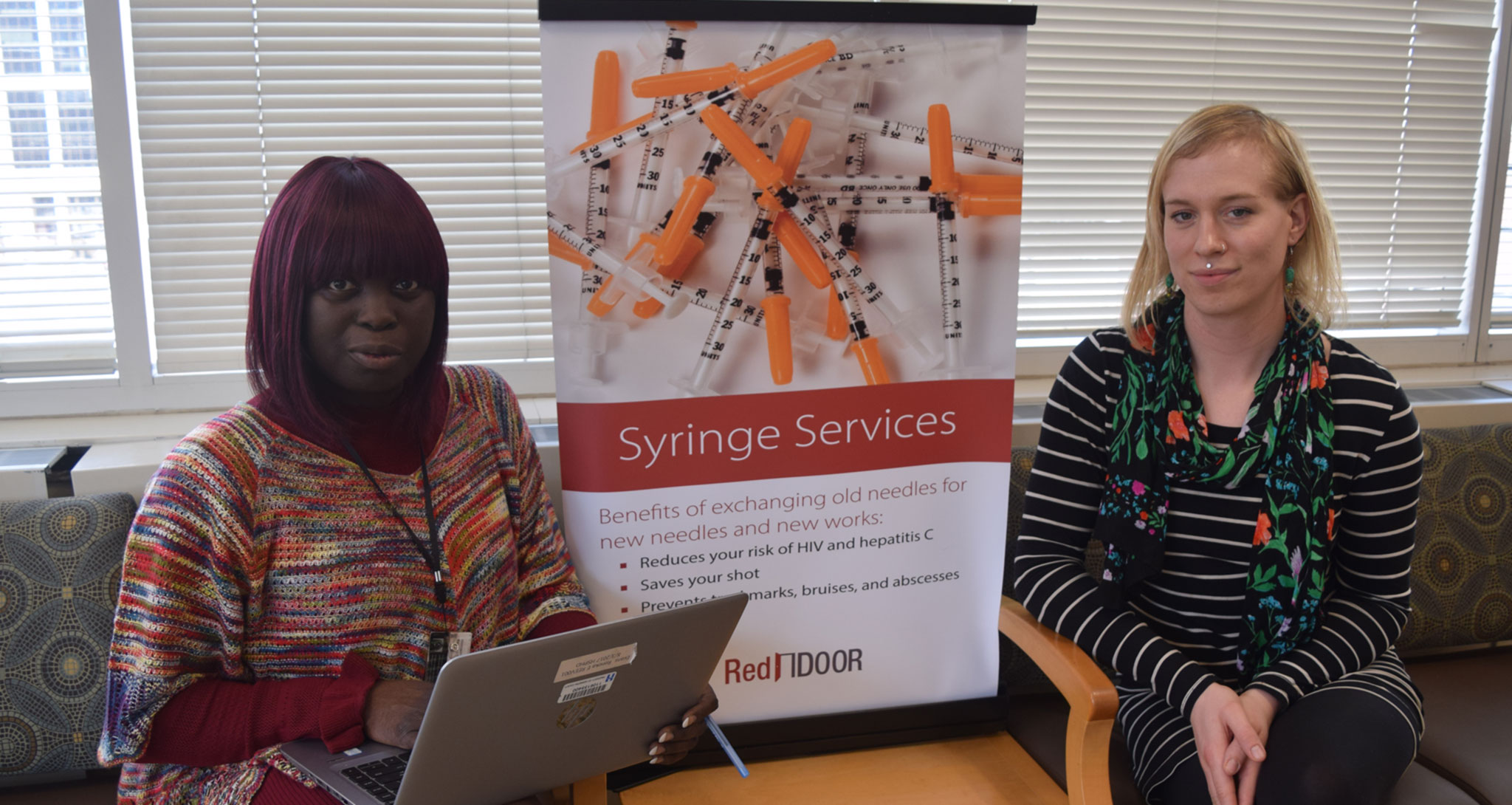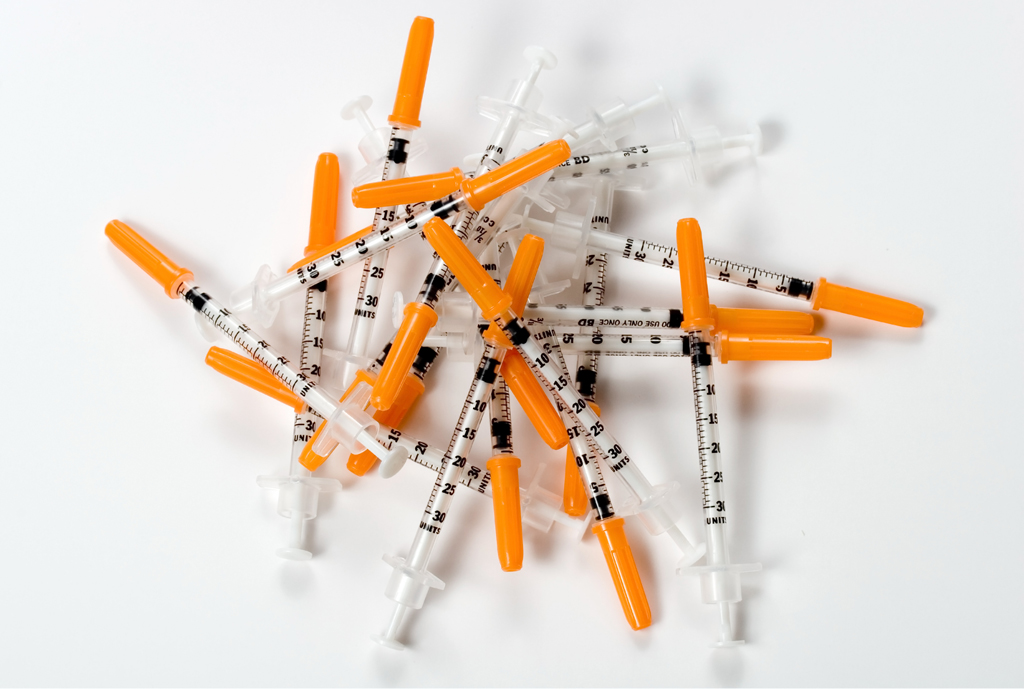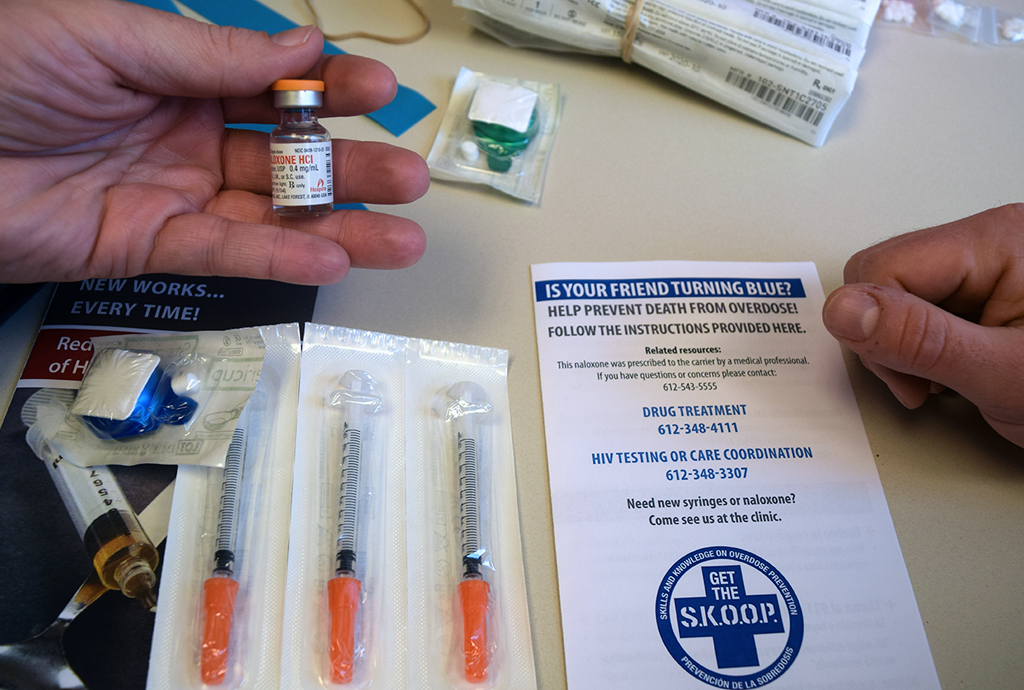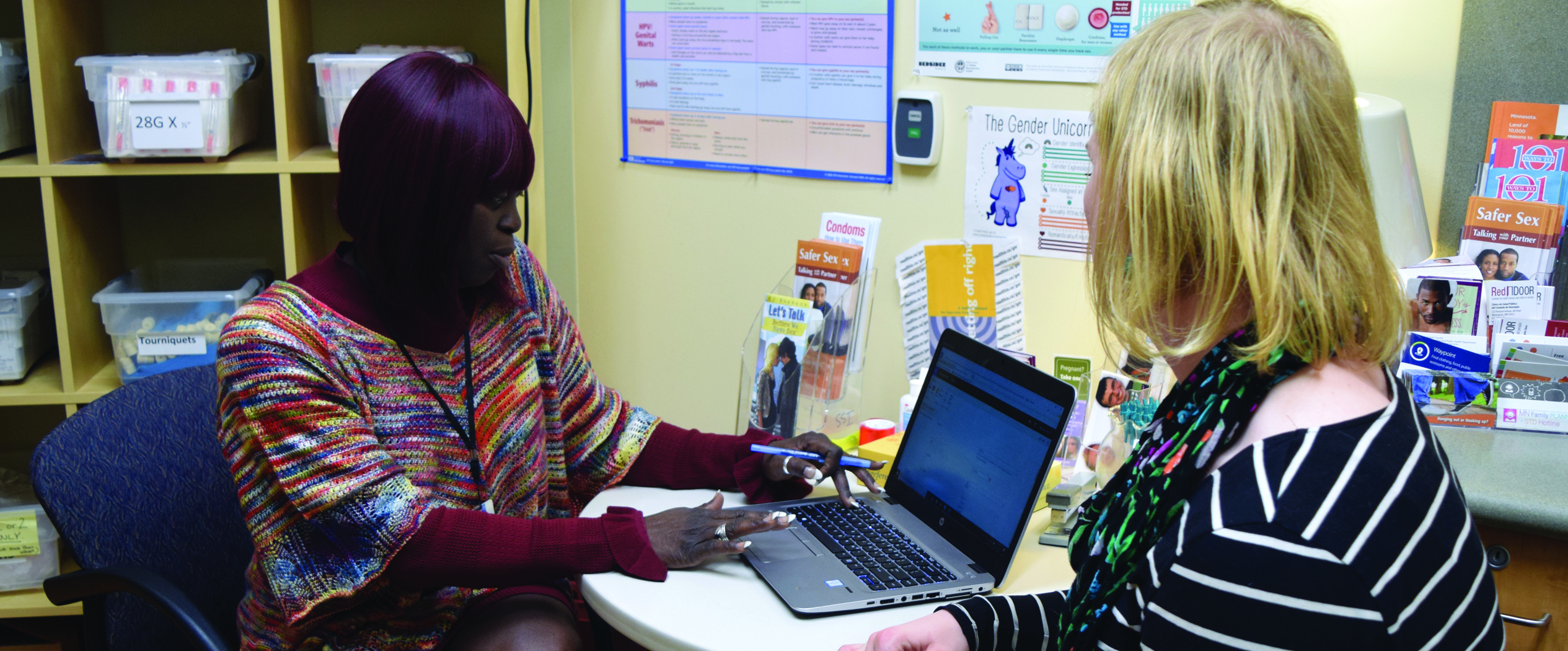

Each week, injection drug users visit Hennepin County Red Door Clinic’s syringe exchange program. While there, they can swap out their used syringes with sterile syringes. They can also pick up sterile injection supplies like tourniquets and cottons. This equipment reduces the transmission of blood-borne infections like HIV and Hepatitis C.
In addition to preventing infections, Red Door’s syringe exchange program combats the opioid epidemic. The program is also a harm reduction strategy, a way for clients to build trusting relationships with health care providers, and a connection to addiction recovery treatment and other resources.
Nationwide, there are more than 300 syringe exchange programs. In Minnesota, there are 10 programs, including Red Door's.
Henry J. Kaiser Family FoundationOpioid-related
deaths in
Minnesota
between
2015-2016,
a 26 percent
increase from
2001-2012
County leadership launched the Red Door syringe exchange program in 2015, after noticing an uptick in opioid-related deaths. Many of these deaths were concentrated near the clinic.
“Staff mobilized to generate a response,” says Mary Jo Meuleners, Red Door clinic operations manager. “They felt strongly that we should get out in front of the epidemic.”
Since its inception, the program has offered Naloxone, a medicine that can reverse an opioid overdose. Between 2015 and 2018, staff distributed 3,321 Naloxone kits. (Each kit contains two vials of medicine.)
According to a client assessment question (“Have you had to use Naloxone since your last visit?”) these Naloxone kits reversed 180 overdoses in 2018.


Number of clients
served by Red Door’s
syringe exchange
program in 2018
Offering injection drug users sterile equipment and Naloxone is an example of a harm reduction strategy. Harm reduction strategies acknowledge that not everyone is ready or willing to give up a certain behavior (e.g., injection drug use). As a result, these strategies focus on minimizing negative health consequences related to the behavior, like infections and overdoses.
Bobbi Gass, a Red Door community health specialist, draws an analogy between syringe exchange programs and the harm reduction strategies related to sex.
“Distributing condoms and PrEP [a medicine that can prevent people from contracting HIV] doesn’t enable people to have sex,” Gass says. “It just helps people to do it more safely.”
She adds, “Harm reduction — as a practice — is very important to me. Helping clients reduce harm is rooted in compassion and centering the needs of the individual. It shows our clients that we care about them, that the county cares about them, and that we are not willing to shame or stigmatize them. And this goes a long way toward building trust and empowering clients to get the resources that they need.”
Bobbi Gass, Red Door community health specialistHarm reduction - as a practice - is very important to me. Helping clients reduce harm is rooted in compassion and centering the needs of the individual. It shows our clients that we care about them, that the county cares about them, and that we are not willing to shame or stigmatize them. And this goes a long way toward building trust and empowering clients to get the resources that they need.
Medical students
who've done
a one-year
rotation at
Red Door’s
syringe exchange
program, learning
about substance
abuse and treatment
Community Health Specialist Reneka Evans has been working with Red Door’s syringe exchange program since 2016. During that time, she’s noticed a trend. “When people first use the program, they just want to get in and get out,” Evans says. “Some people even [lie and] say, ‘I’m getting these items for my cousin or for another person.’”
But after she’s built a trusting relationship with a client, she notices a change: they’re more forthright about their situation and more likely to access medical care and supportive services.
There’s not a one-size-fit-all procedure for building a trusting relationship, but Evans offers approaches. “I make clients feel welcome,” she says. “I make sure confidentiality is in place. When I ask a question, I wait for an answer. I never assume anything. I let them facilitate the assessment.”
Gass agrees, “Our clients are the experts here,” she says. “My job is just to listen to them, ask questions to support them, and provide them with the tools and resources to reduce harm.”
Because Red Door is Minnesota’s largest HIV and STI clinic, Meuleners notes that staff have specialized training in building trusting relationships with populations, like injection drug users, who experience shame and stigma. And because Red Door staff are reflective of the population the clinic serves, they have empathy and compassion for their clients’ lived experiences.

When people use Red Door’s syringe exchange program, staff walk them through an online assessment. This assessment, and ongoing conversations between staff and clients, helps identify other medical and social services resources that might be appropriate.
Those resources include HIV or STI testing, vaccinations, wound care, mental health care, housing, or addiction recovery treatment (like medication and counseling). Through the program, staff made 500 referrals to resources like this in 2018.
Gass recounts a recent example. “Earlier this year, a middle-aged man came in for the exchange,” she says. “We got to talking, and he told me that so many of his friends have died of overdoses. But one of his closest friends had recently come to him and told him that he wanted to go to treatment.”
Gass gave the man several addiction recovery resources. “He was so proud of his friend and so excited to take the resources back to him,” she says.
Red Door’s syringe exchange program: https://www.reddoorclinic.org/more-services
Hennepin County’s response to the opioid epidemic: https://www.hennepin.us/your-government/projects-initiatives/opioid-response
Hennepin County’s addiction resources: https://www.hennepin.us/residents/health-medical/addiction-help
Medical students who are interested in doing a one-year rotation at the Red Door syringe exchange program can email phworkforce@hennepin.us
Written by: Lori Imsdahl